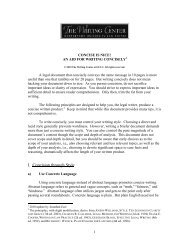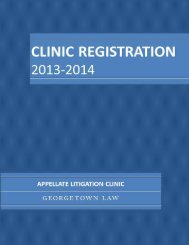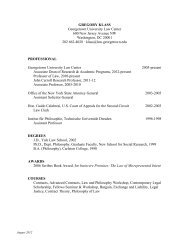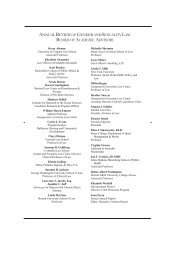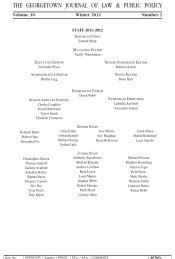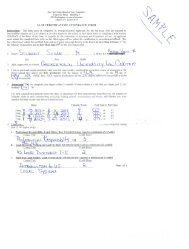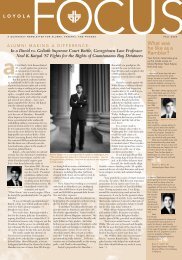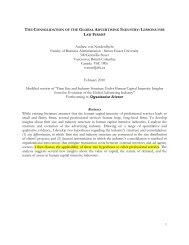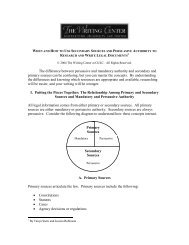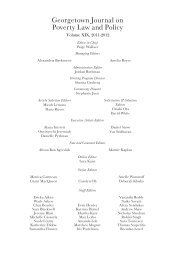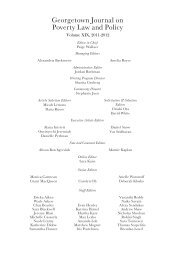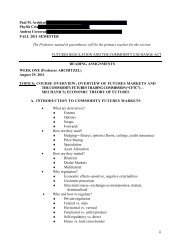Date: April 12, 2013 Topic: The Shrinking ... - Georgetown Law
Date: April 12, 2013 Topic: The Shrinking ... - Georgetown Law
Date: April 12, 2013 Topic: The Shrinking ... - Georgetown Law
Create successful ePaper yourself
Turn your PDF publications into a flip-book with our unique Google optimized e-Paper software.
Resource Co-Specialization and Supplier Concentration in Plural Sourcing: Evidence<br />
from Legal Services Sourcing at Fortune 500 Companies<br />
ABSTRACT<br />
Although the preconditions for the simultaneous use of multiple sourcing modes have been<br />
explored, the question of what determines how much to make and how much to buy in plural<br />
sourcing has been understudied. This study fills this gap. Using longitudinal data of in-house<br />
lawyers at, and law firms used by, Fortune 500 firms, we find empirical evidence that plural<br />
sourcing strategies are tilted in favor of ‘make’ whenever firms have opportunities for<br />
resource co-specialization (notably between legal resources and R&D, marketing, and top<br />
management teams) and a broad portfolio of suppliers that raises the cost of contracting. Our<br />
study suggests that plural sourcing research benefits from examining a group of transactions<br />
within a corporate function, to complement the predominant focus on transaction-level<br />
outcomes.<br />
Keywords: plural sourcing; make-and-buy decisions; resource co-specialization; supplier<br />
concentration; legal services.<br />
INTRODUCTION<br />
How do firms organize economic transactions? Since the seminal work on firm<br />
boundaries by Coase (1937, 1988), scholars have addressed this question by identifying<br />
multiple modes (i.e. make, buy, ally, etc.). Prior work in transaction cost economics (TCE)<br />
analyzed the transactional characteristics that lead to choosing one of these modes (Poppo et<br />
al., 1998; Walker et al., 1984; Williamson, 1985) while the resource-based view of the firm<br />
(RBV) suggests that firm boundaries reflect differences in capabilities and knowledge<br />
(Argyres, 1996; Jacobides et al., 2005; Kogut et al., 1996).<br />
Both TCE and RBV employ a comparative analysis of sourcing modes, leading to the<br />
choice of the most efficient institutional arrangement (i.e. market, hierarchy or hybrid) for<br />
each transaction. However, prior research has documented the simultaneous use of multiple<br />
sourcing modes by firms, calling this concurrent sourcing (Parmigiani, 2007; Parmigiani et<br />
2



